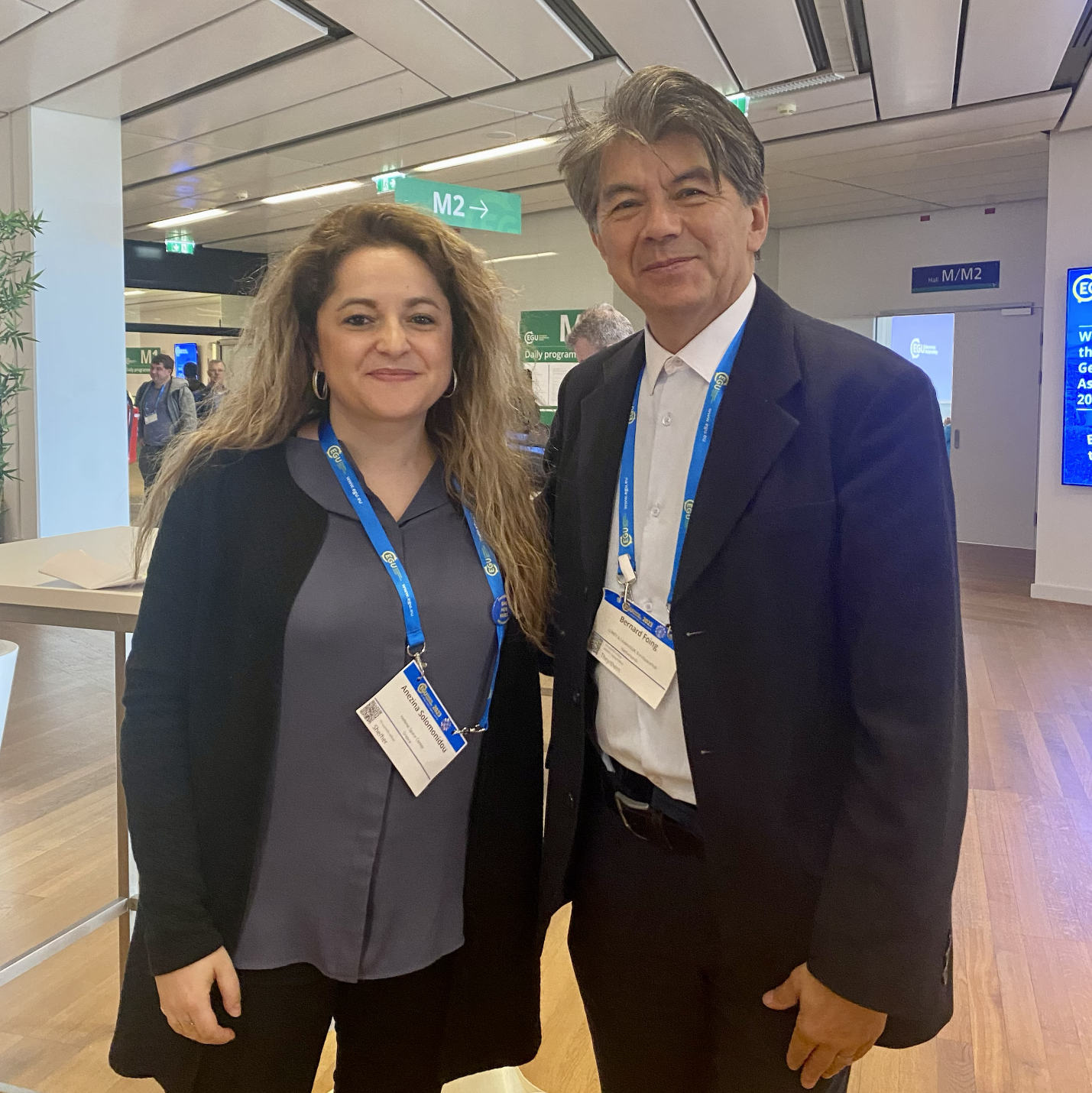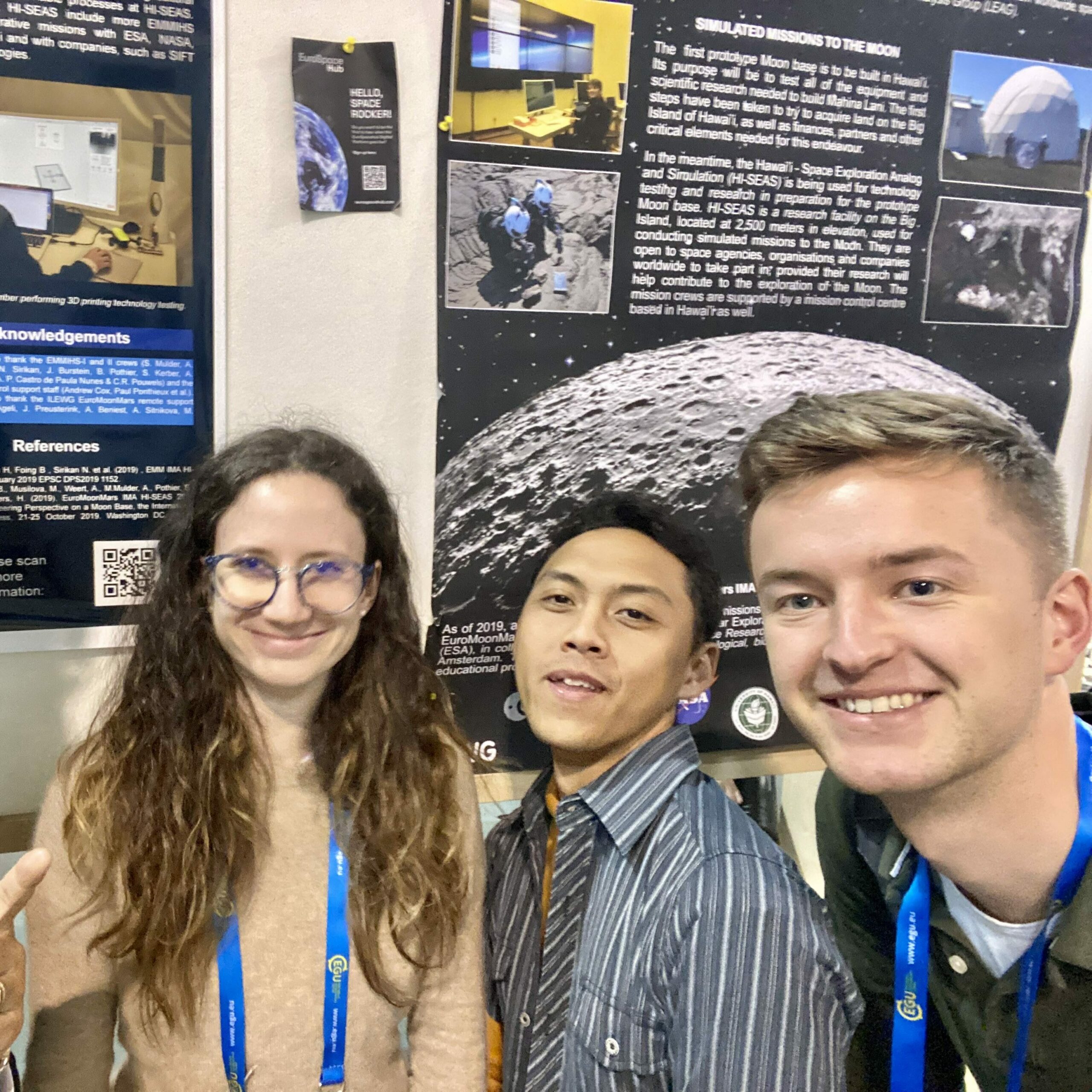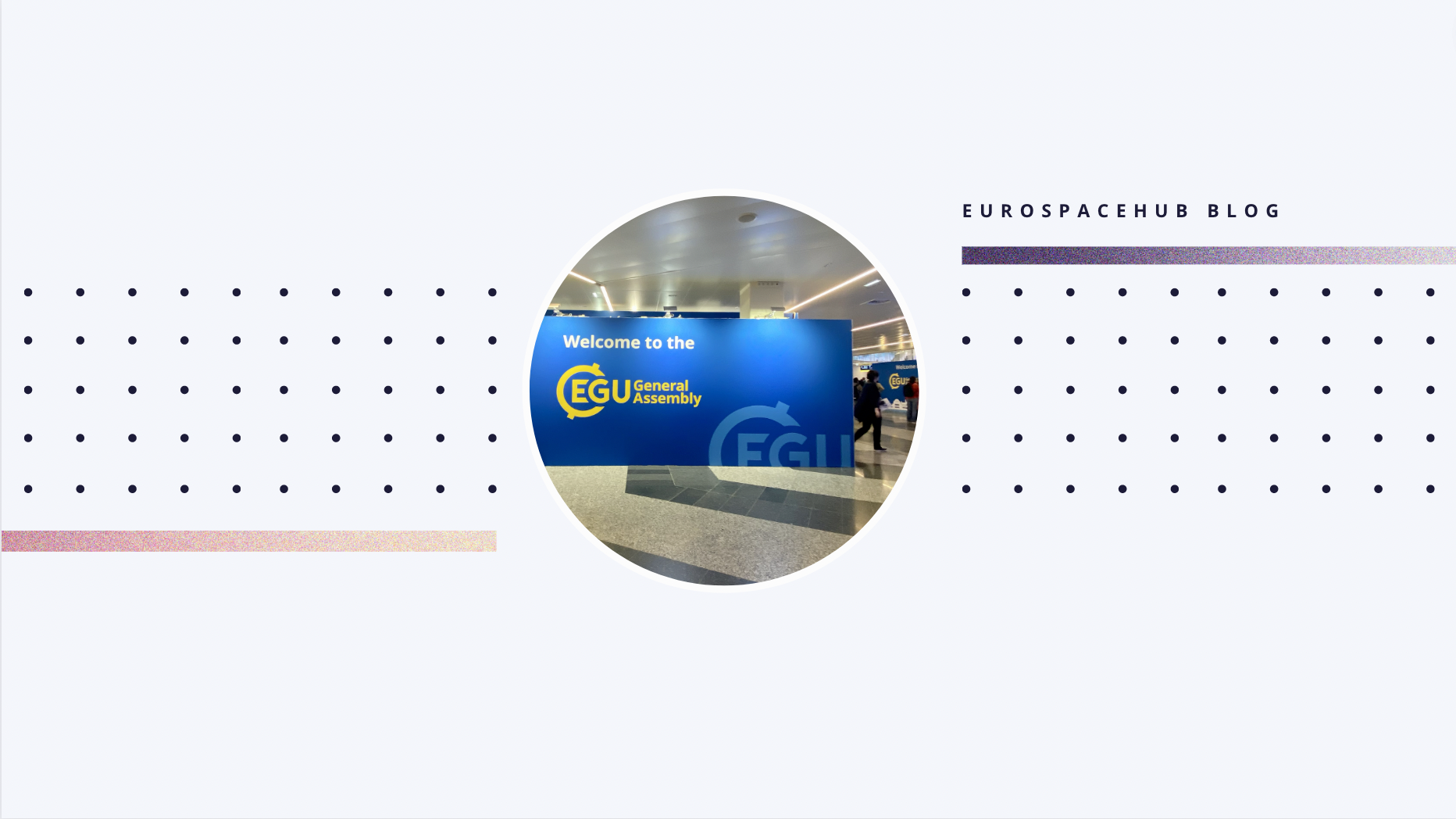Our experience at the EGU Conference 2023 in Vienna is going great, and here we are, sharing with you the highlights of the event! It was an early start for our team yesterday, with the installation of posters for the Lunar Session that took place in in the afternoon. The session was called “Lunar Science, Exploration & Utilization Session” and was co-chaired by Prof Foing, CEO of Lunex and one of the founding members of EuroSpaceHub consortium.
What topics were discussed during the session? Contributions of various kinds were presented by the speakers, from the latest results in the areas of geochemistry, geophysics, open planetary science and exploration, to the presentation of current ongoing missions and the goals for the upcoming ones. They also included the results of studies from the terrestrial field campaigns organized by Lunex and with which EuroSpaceHub collaborates intensively within the EuroSpaceHub Academy Program.
The session of oral presentations was followed by the dedicated poster session in the late afternoon, where we had very interesting 1:1 conversations with the audience, especially with several Phd students. The public was very keen to learn more about the posters dedicated to the HI-SEAS base in Hawaii, of the International MoonBase Alliance, where the last EMMIHS23 Hana Hou mission also took place. The EMMIHS missions are the result of collaborative efforts between Lunex EuroMoonMars and the HI-SEAS base, located at 2500m altitude on Mauna Loa volcano on the Big Island (Hawaii). Many Early Career Scientists have shown interest in participating in upcoming missions in the context of our EuroSpaceHub Academy, and we are excited at the idea of bringing together scientists with different backgrounds and experience in our program. Indeed, the HI-SEAS base represents a fantastic field laboratory where geologists can perform experiments and collect data in a unique environment. This aspect captured the attention of the scientists at this conference, where the Geosciences play the central role. Indeed, the Analog Missions program of the EuroSpaceHub Academy seeks to encourage a multidisciplinary approach to the study of space on Earth.
Beyond the Lunar Session, we followed with particular enthusiasm the Division Meeting for Planetary and Solar System Sciences (PS), which took place during the lunch break yesterday. Indeed, during the plenary session the major achievements and next goals of the Union’s Planetary Sciences division were announced, including several awards given to Early Career Scientists, the social events sponsored by the division, and the election of the Division’s next president, Anezina Solomonidou, who will be serving until 2025. We had the pleasure of interviewing the president immediately after the meeting! You can watch the full interview, conducted by Lunex’s Prof Foing, in the highlights on our Instagram page @eurospacehub. In the meantime, here is an extract of our conversation with her:
Prof. B. Foing (Lunex EuroSpaceHub):
What are your goals as a newly elected president here at the Planetary Division of the Union?Anezina Solomonidou (President of PS Division):
We all know that Planetary Space Science and Research are a fast growing business and field. So what we need to do is to enhance our presence within EGU and show how important it is to be active members. It is important to showcase our work, to showcase our collaborations, and to represent our field within EGU, by communicating our Science.
Prof. B. Foing (Lunex EuroSpaceHub):
It is an exciting year for Planetary Science, we had the Juice Launch last week, there was a launch attempt also of Space-X Starship, there are many ongoing missions. What are the opportunities now for Early Career Scientists to work in this area?Anezina Solomonidou (President of PS Division):
I think this is a golden Era for Early Career Scientists, because there are so many opportunities. This is a fast growing field and business as well, if we talk about the technological aspect. As you said, there are so many missions ready out there, so many developments on their way, that we know that in the next 30 years we will be extremely busy. So all we need is to form strong groups with inclusivity and diversity at all different stages of professionals.


Among other sessions that caught our attention these days we would also like to mention those dedicated to Outreach and Science Communication. Indeed, in this edition of EGU2023 there are several short courses organized with a focus on outreach, which is evidence of an increased awareness in the field of Science of the importance of communicating scientific results to the general public in an inspiring and engaging way, in order to show their impacts and benefits on our society.
These included a very unique session entitled “How to bring your Science out there?” in which several case studies of multidisciplinary outreach projects, resulting from collaboration between scientists and artist-performers, were reported to communicate the importance of climate change to the public. Among them were a joint project between a research group of scientists and a theater company and another with a focus on movies and the role of geologists as actors. Within the program of lectures on Communication was also the course “Meet the editors: how to write and revise your manuscript.” This was a micro-course spread over two sessions, in which the speakers delved into the various steps involved in writing and structuring a paper for publication in scientific journals. The course was primarily intended for Early Career Scientists taking their first steps in publishing in peer-reviewed journals. During his lesson, Prof. Nadav Peleg (University of Lausanne and Editor at Hydrology and Earth System Sciences Journal and in the Journal of Hydrology) gave many practical tips on how to structure a paper properly so as to increase the chances of being published.
This is it for now! We look forward to tomorrow, when the results of our EuroSpaceHub Academy will be shown during the session “Planetary Instrumentation and Data Techniques”.

